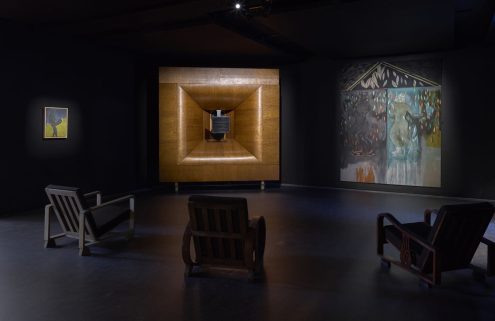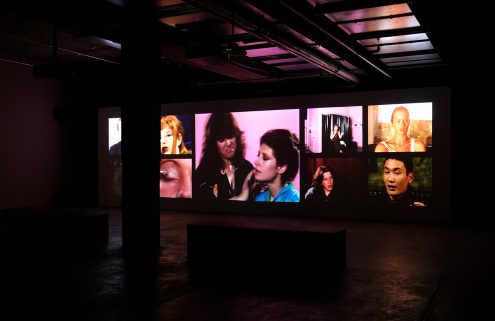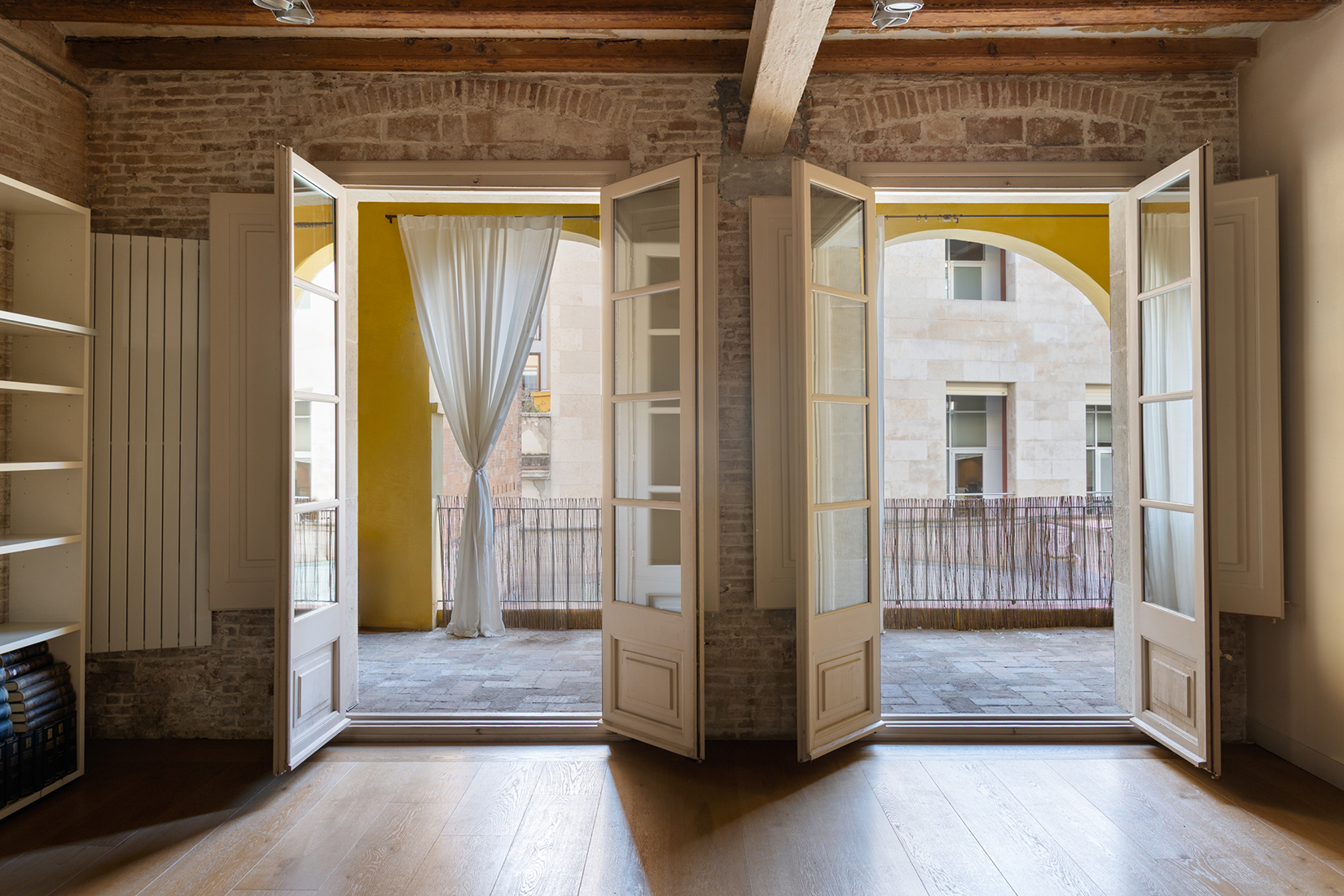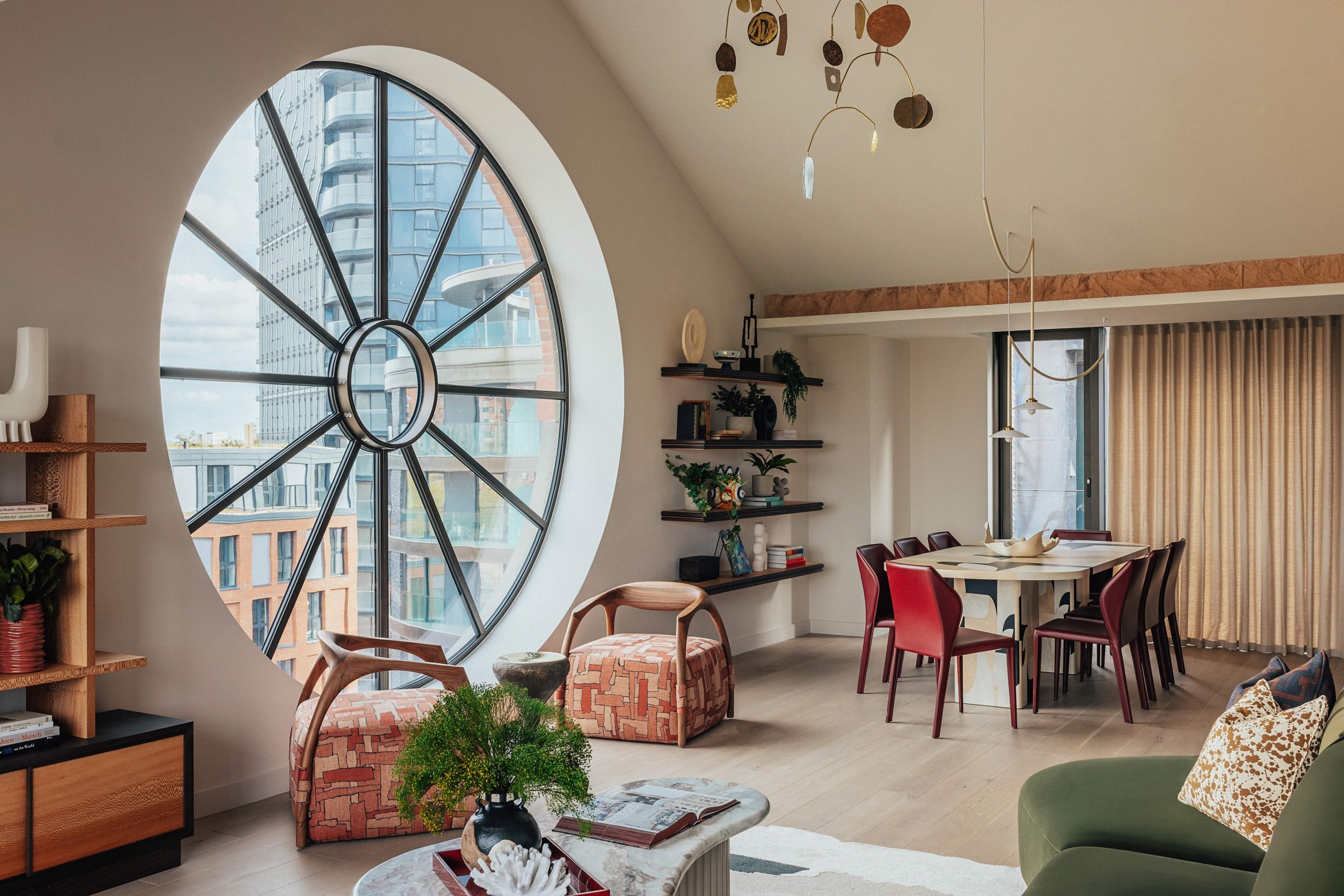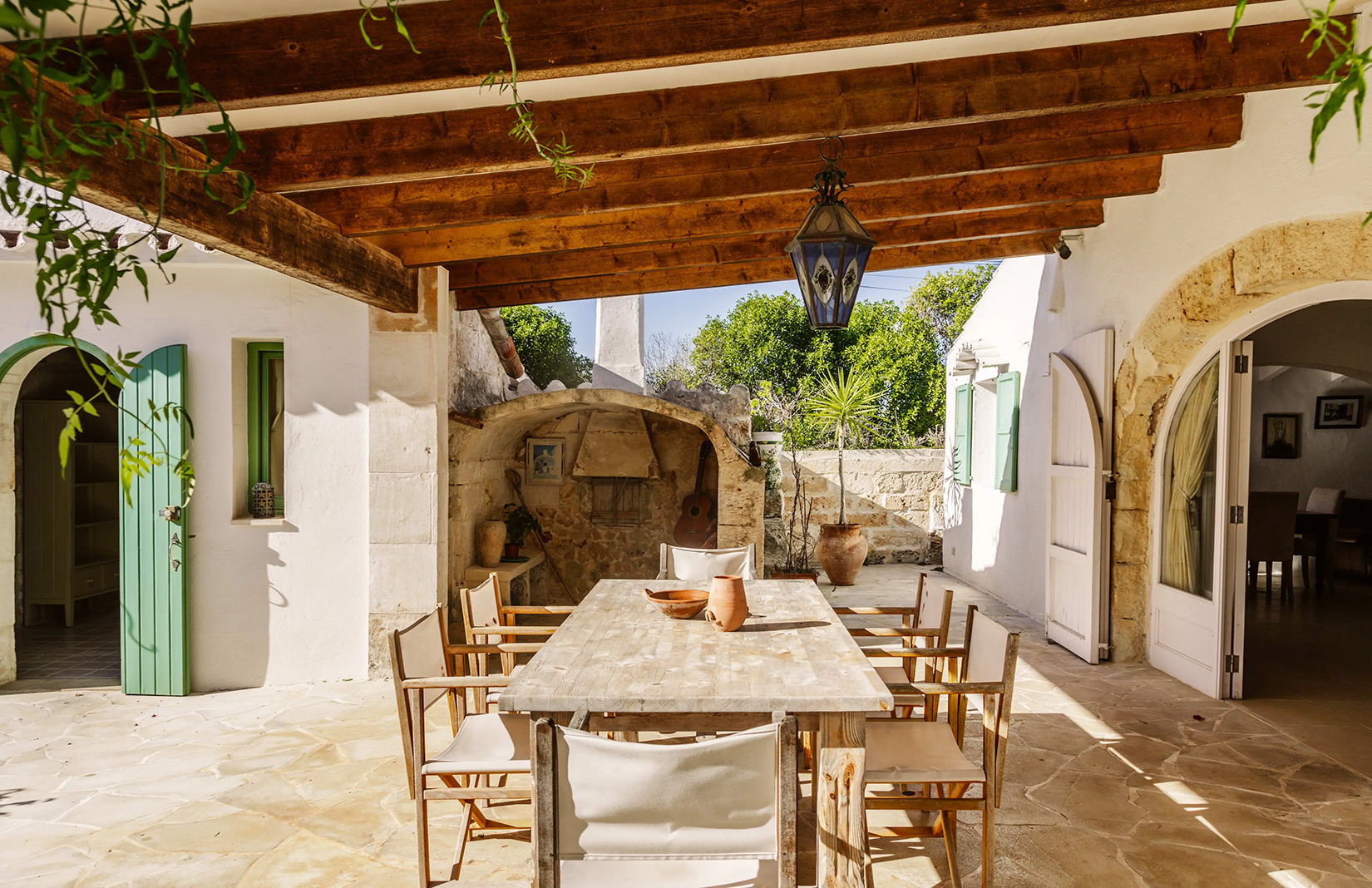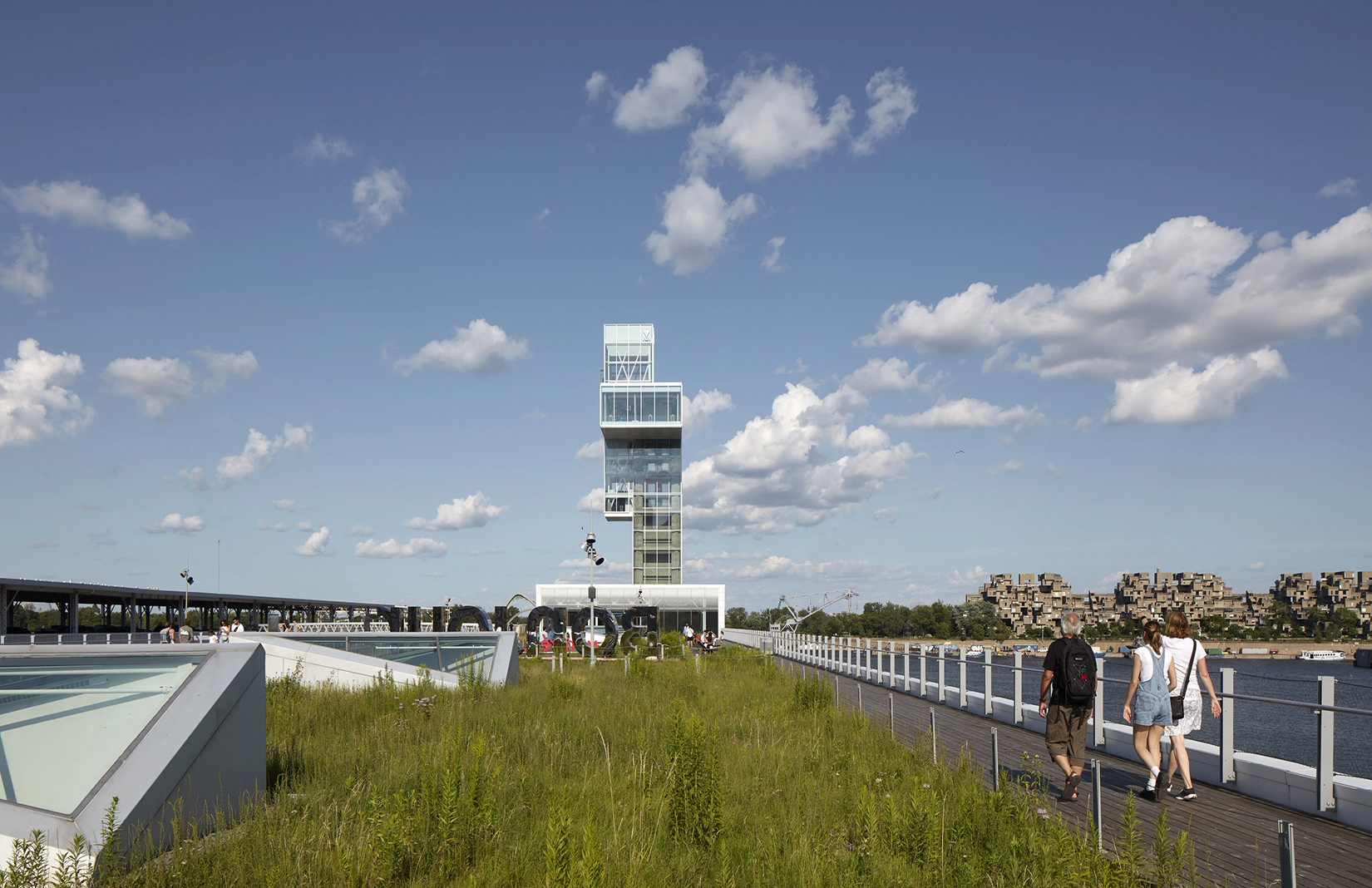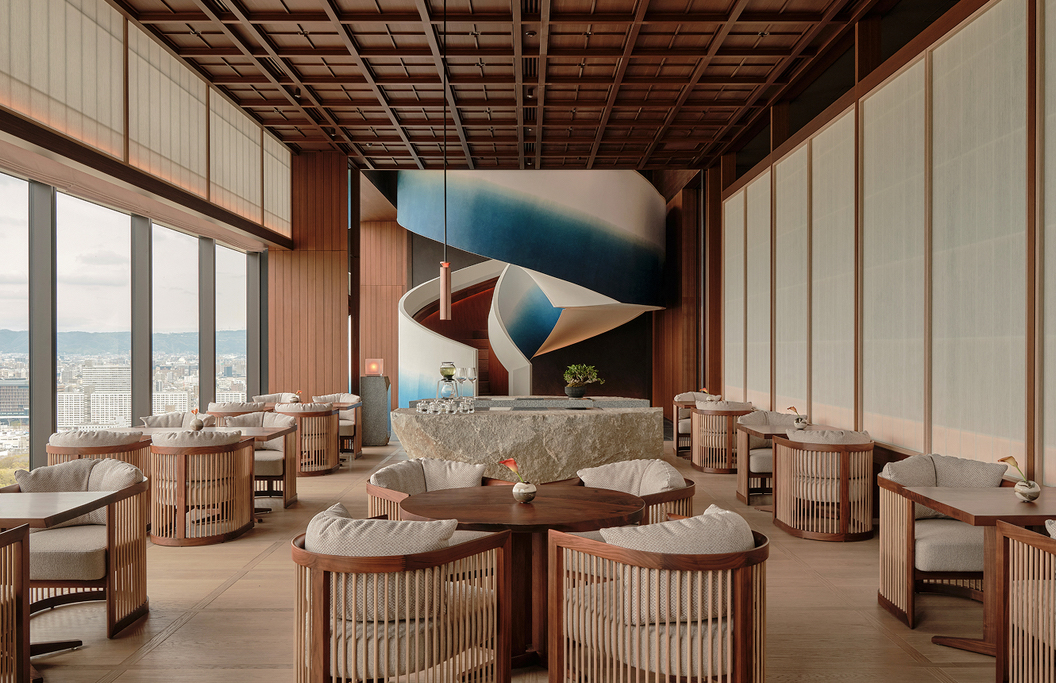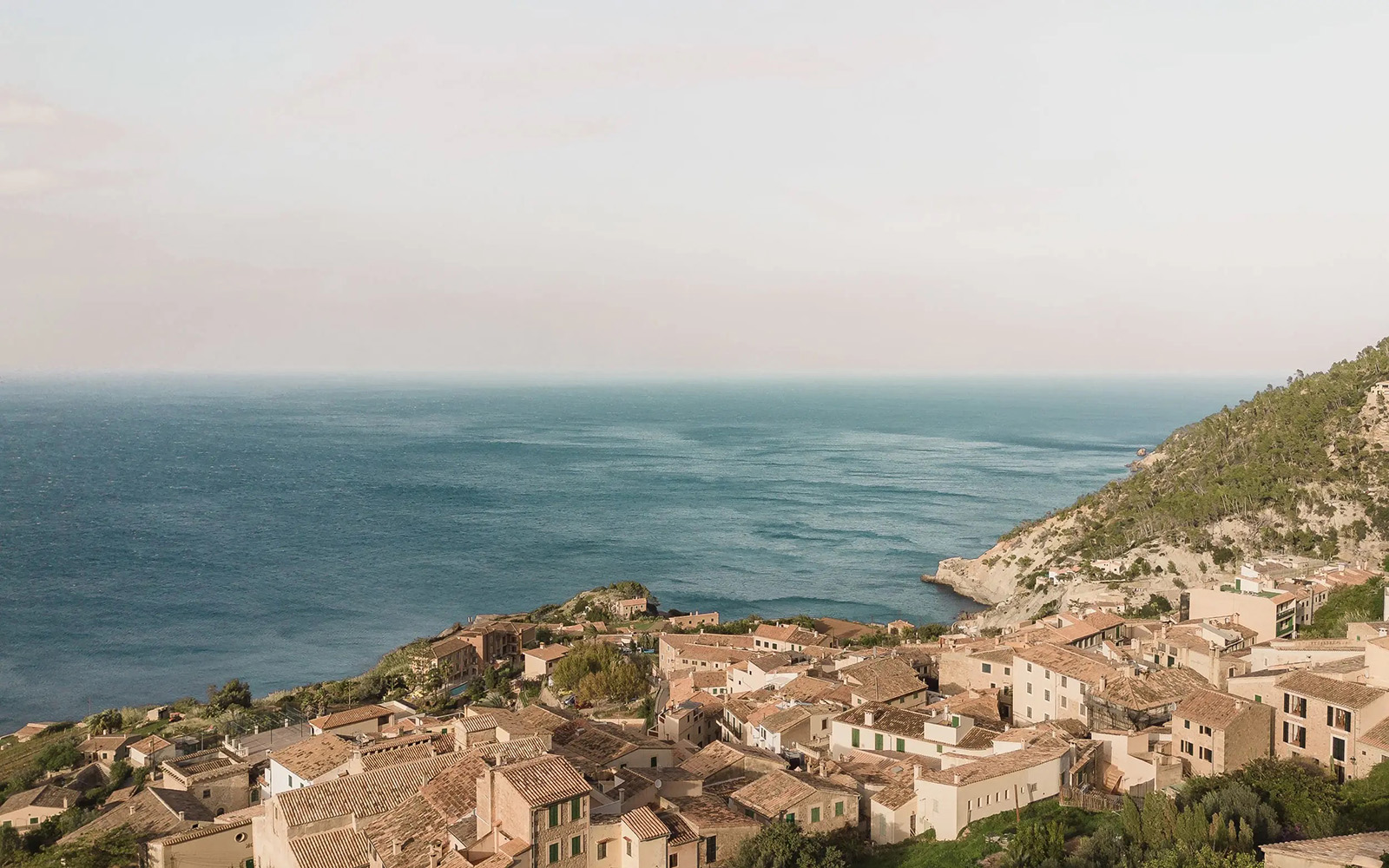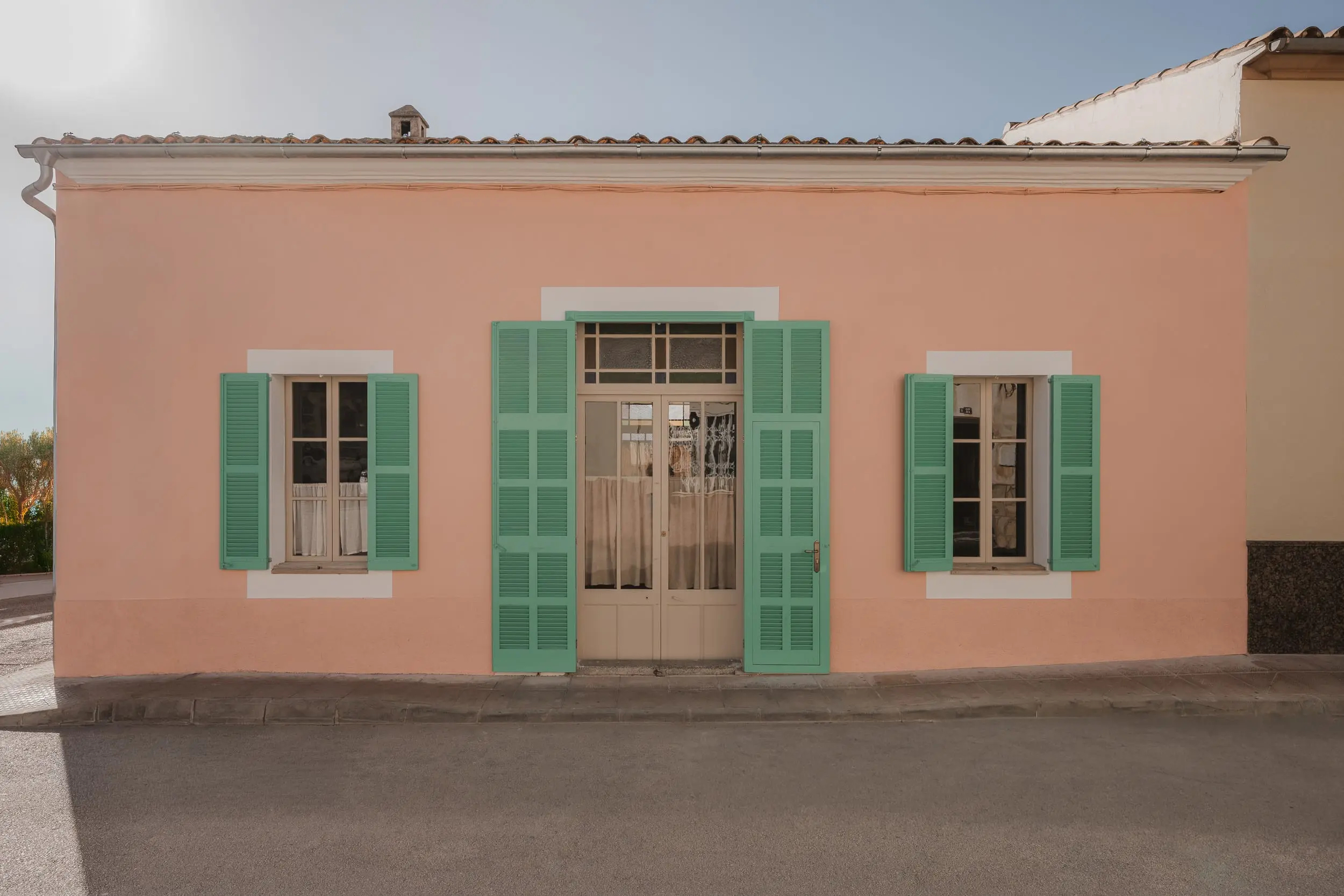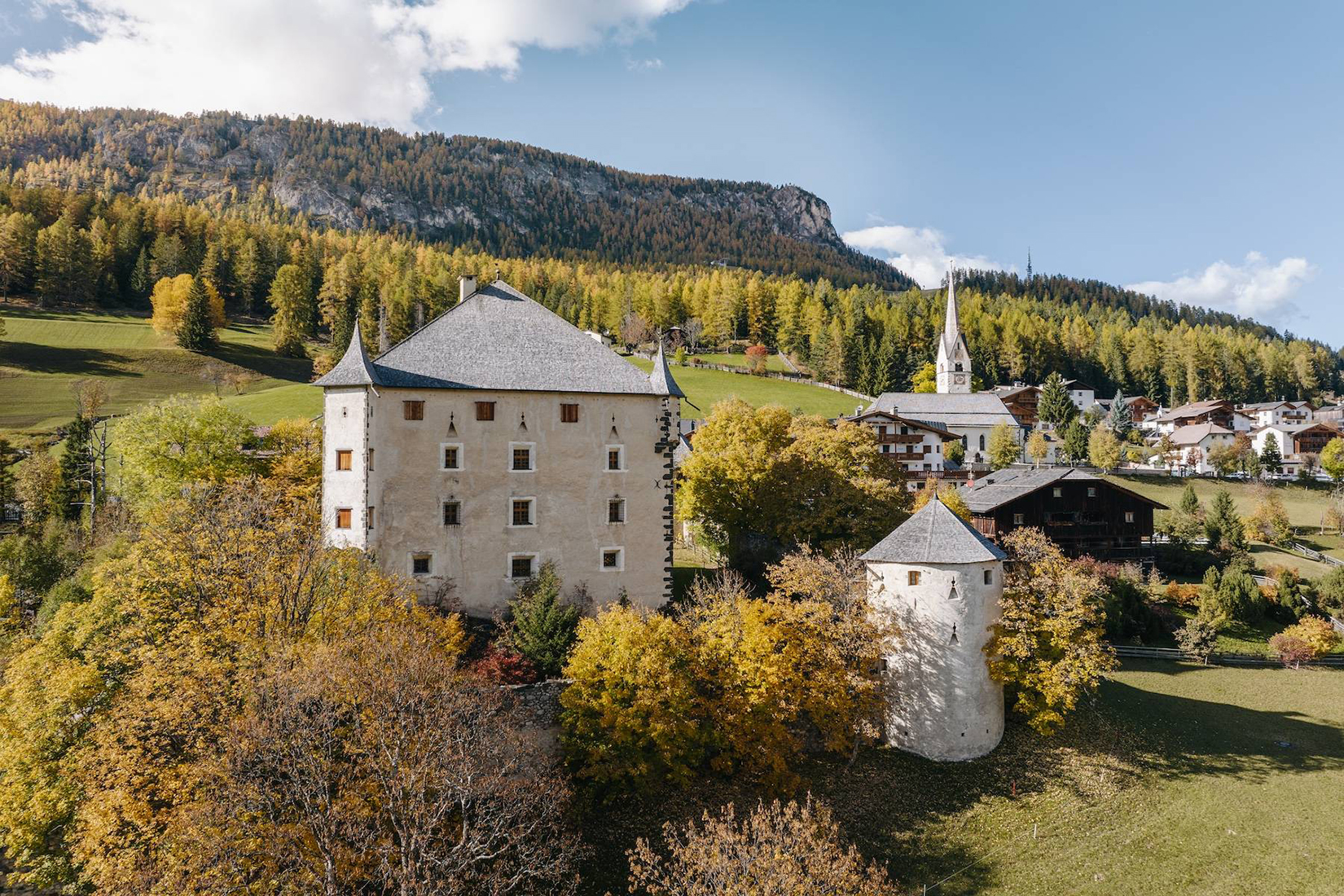The Vinyl Factory: Reverb exhibition runs until 28 September 2024 and comprises 18 installations, including a specially conceived record room at its centre by legendary Haçienda nightclub designer Ben Kelly.
Some 100 vinyl records are on show in the black box space, drawing from The Vinyl Factory’s eclectic archive of artists and musicians from the last 15 years, including Marina Abramovic, Arthur Jafa, Nan Goldin, Grace Jones, Pipilotti Rist, Yussef Dayes, Es Devlin, Thom Yorke, Massive Attack, Pet Shop Boys, Daft Punk, and The XX.
Each cover is unique, a riot of colours and imagery as disparate as the sounds they encase. Kelly’s spatial intervention has wrangled the collection into a harmonious order, allowing each artwork to sing.
Kelly frequently collaborates with The Vinyl Factory, and his ‘Columns’ installation of hazard-striped sculptures holds an iconic place in the history of 180 The Strand’s art shows. His work is always deceptively simple; it’s only upon closer inspection that the clever details become apparent, revealing a space with a visual language inspired entirely by vinyl.

Photography: Jack Hems

Photography: Jack Hems

Photography: The Vinyl Factory

Photography: The Vinyl Factory

Photography: The Vinyl Factory

Photography: The Vinyl Factory

Photography: The Vinyl Factory

Photography: The Vinyl Factory

Photography: The Vinyl Factory

Photography: The Vinyl Factory

Photography: The Vinyl Factory

Photography: The Vinyl Factory

Photography: The Vinyl Factory
Raw concrete walls have been clad in sheets of half-millimetre-thick black powder-coated corrugated steel. This material is typically used for roofing, but when applied to the vertical surfaces of the record room, it takes on a more imaginative quality.
‘The corrugations of these panels are not unlike the grooves of a vinyl record, but on a much bigger scale,’ explains Kelly. ‘It’s the perfect material.’
Its industrial nature also harmonises with the building. Built in the 1970s, 180 The Strand was formerly known as Arundel Great Court—a colossal brutalist structure that champions concrete and Portland stone in equal measure. Says Kelly, ‘[The corrugated steel] really suited the environment, and it’s a material link between the subject matter, the 12″ diameter records, and the brutalist building itself.’
Using a laser grid to mount them uniformly, the records appear to ‘float’ across the rippling grooves of the corrugated steel, emphasising the negative space between the objects.
‘It’s simple, it’s straightforward. It’s not shouting and screaming at you, but it has its own strength and honesty, much like vinyl itself.’

The sheer volume of the collection presented the biggest challenge for Kelly: exterior walls were quickly used up long before he approached the 100th cover. So, the designer inserted two geometric elements into the space to conjure more display space and guide the viewer through the room.
The first is a floating wall, or, as Kelly calls it, a monolith. This cuboid form is a recurrent motif in Kelly’s work, inspired by Stanley Kubrick’sfilm, 2001: A Space Odyssey (‘the most amazing, visually impactful movie’ he enthuses) and the gravestone he designed with Peter Saville for Factory Records founder, Tony Wilson, in 2010. ‘Although it’s not square, it represents a massively oversized record sleeve.’
The monolith points towards his second spatial intervention, which he refers to simply as ‘the drum.’ This cylindrical volume is a manifestation of a giant vinyl record, outfitted with a black circular carpet ‘to somehow magnify and emphasise the feeling of being inside a record,’ says Kelly.
At the centre is a 40-mm-diameter orange insert. ‘Orange is the only colour that I’ve put into this whole scheme, apart from black,’ he says. Orange is, of course, Kelly’s signature colour, and the restrained splash is one of several details to be discovered by those familiar with his design oeuvre. Another Easter egg is the laser-etched display labels, cut uniformly by his local cobbler which help further whip the artworks into cohesive order.
With such a dark and restrained colour palette and 100 objects to view, lighting is crucial. It also helps signify a departure from the rest of the exhibition.

‘It’s a reasonably high level of lux compared to the other exhibits within[Reverb], which have their own lighting design or none at all because they’re film. So you’re walking into a very different environment, and I think that was really quite important.’
While the cinematic artworks in the exhibition are on timers, with set durations and/or a performance schedule, inside the record room, visitors can browse slowly, savouring each artwork, one at a time.
Lighting also recalls the familiar. A series of bare lighting tubes span the space overhead, while the drum is outfitted with globe lights that mimic its circular geometry. ‘The lighting should be really simple, almost like a retail environment. It feels like you’re walking into a record store, but not quite.’
Exiting the record room, the viewer is thrust back into the darkened gallery space, illuminated by the glow of film projections. It’s deliberately jarring, a feeling that lingers as a reminder of the contrasting worlds within The Vinyl Factory: Reverb exhibition, where each work offers its own unique and immersive experience.
The Vinyl Factory: Reverb runs until 28 September 2024 at 180 The Strand. Book tickets online

